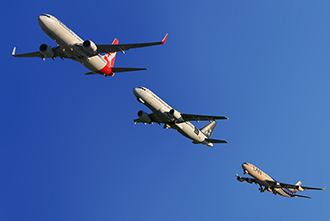Well, not a week goes
by in the papers without hearing about the worsening congestion facing the
Chinese aviation industry and the ensuing lengthy delays travellers have to
suffer when trying to get into or out of China by air. Everyone has a story
about how long they have been stuck in airport departure lounges, waiting for a
glimmer of hope to appear on the screen flashing in front of them and often
leading to delays of 3 hours or longer.
This scene may,
hopefully, be coming to an end soon, as China invests more in updating its air
traffic control infrastructure, trains more air traffic controllers and, most
importantly, provides more airspace for civilian aviation operations. Much
airspace in China is still under military air traffic control who, obviously,
allow military traffic to have priority over civil traffic. This can obviously
cause very long delays and disruptions, especially around busy traffic areas
such as Beijing and Shanghai, leading to misery for all. Adding to this issue
are the sheer number of flights wanting access to the airspace, which is the
reason why China needs to upgrade equipment and train staff urgently, so as to
increase capacity and reduce delays. One way in which this is happening is by
reducing the vertical separation between planes, allowing more of them to
occupy the same airspace simultaneously. The practice is known as ‘Reduced
Vertical Separation Minima’ and was introduced into China as long ago as 2007.
Such a practice ensures that at least 1000ft, (or approximately 300 metres in
China), is kept between aircraft, so as to ensure safe operations whilst at the
same time allowing more planes into the same space.

Moving back to the
military airspace issue, Wang Changshun, the head of China Southern, China’s
largest airline by fleet, stated in the China Daily that air traffic control
restrictions had, “held back development of the civil aviation industry and
caused flight delays”, which is pretty much the truth! However, it is hoped
that the government’s ‘Belt & Road’ initiative will provide a large
incentive for the situation to be rectified. This is due to traffic flying from
Xinjiang in western China in a westerly direction often have to extend their
flights by at least an hour, due to indirect air traffic control routings.
Operating in this way adds costs to any flight and also impedes China’s ability
to trade internationally, so it is likely that the issue will be rectified as
part of the ‘Belt & Road’ initiative.







